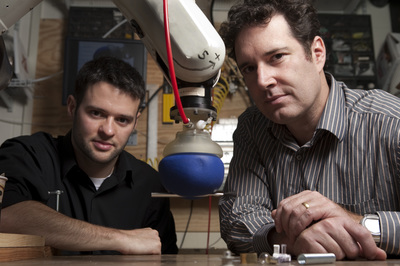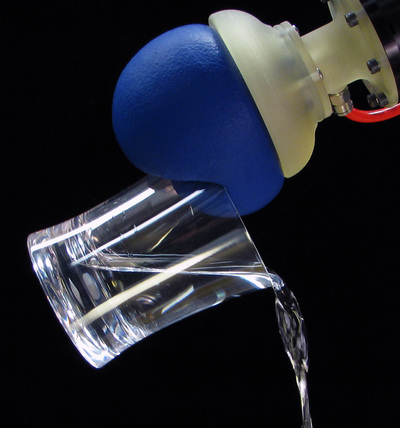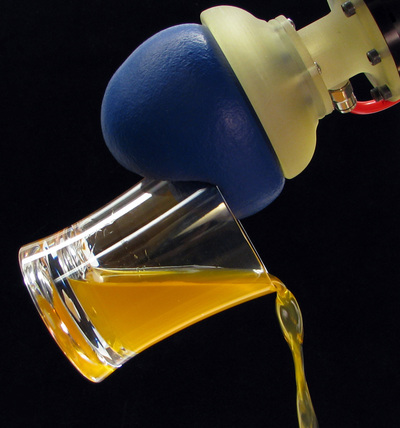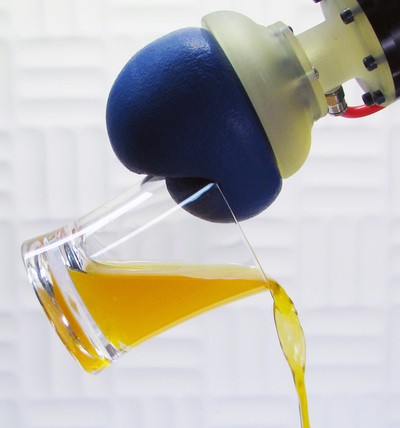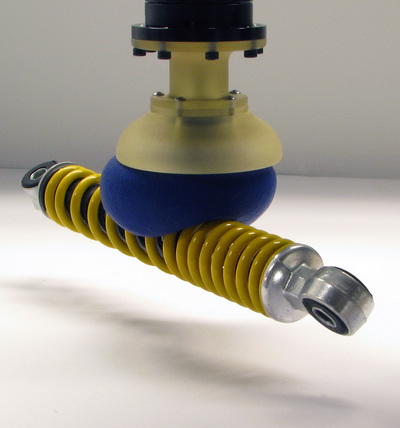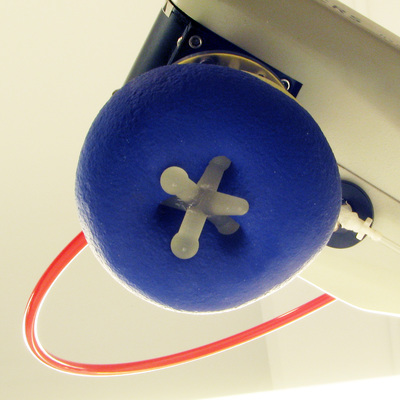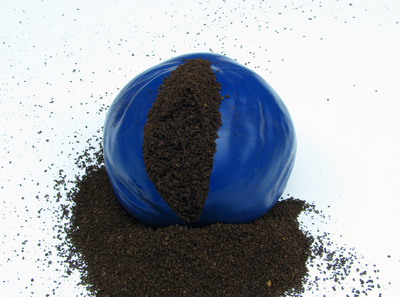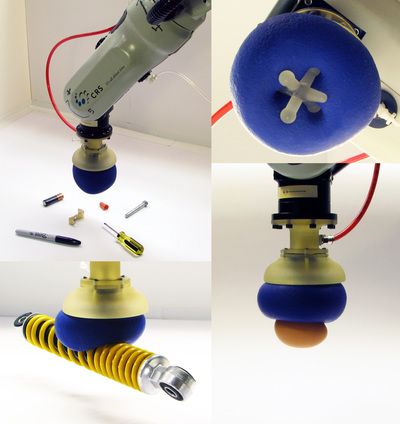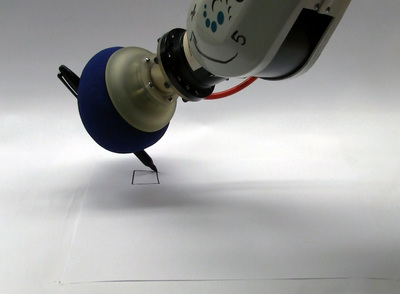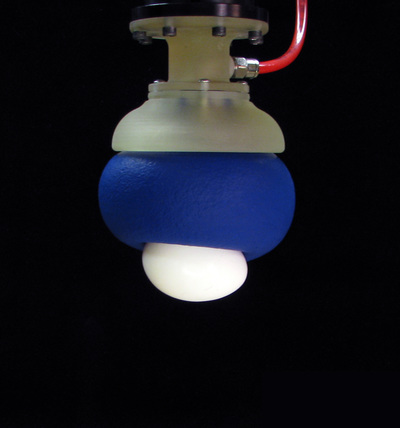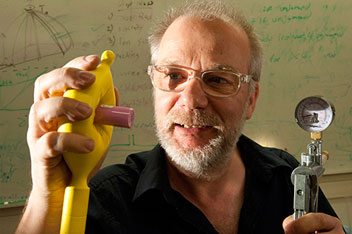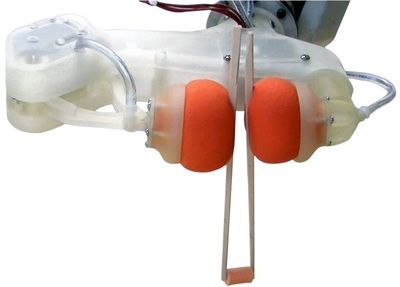|
Gripping and holding of objects are key tasks for robotic manipulators. The development of universal grippers able to pick up unfamiliar objects of widely varying shape and surface properties remains, however, challenging. Most current designs are based on the multifingered hand, but this approach introduces hardware and software complexities. These include large numbers of controllable joints, the need for force sensing if objects are to be handled securely without crushing them, and the computational overhead to decide how much stress each finger should apply and where.
. We show that the operating principle is the ability of granular materials to transition between an unjammed, deformable state and a jammed state with solid-like rigidity. We delineate three separate mechanisms, friction, suction, and interlocking, that contribute to the gripping force. Using a simple model we relate each of them to the mechanical strength of the jammed state. This opens up new possibilities for the design of simple, yet highly adaptive systems that excel at fast gripping of complex objects.
|
Here we demonstrate a completely different approach to a universal gripper. Individual fingers are replaced by a single mass of granular material that, when pressed onto a target object, flows around it and conforms to its shape. Upon application of a vacuum the granular material contracts and hardens quickly to pinch and hold the object without requiring sensory feedback. We find that volume changes of less than 0.5% suffice to grip objects reliably and hold them with forces exceeding many times their weight.
|
learn more |
Project participants |
From U. Chicago: Eric Brown, Nicholas Rodenberg and Heinrich Jaeger
From Cornell: John Amend and Hod Lipson From iRobot: Annan Mozeika and Erik Steltz |
Related Publications |
Brown, E., Rodenberg, N., Amend, J., Mozeika, A., Steltz, E., Zakin, M., Lipson, H., Jaeger, H. (2010) "Universal robotic gripper based on the jamming of granular material," Proceedings of the National Academy of Sciences (PNAS), Vol. 107, no. 44, pp.18809-18814.
|

